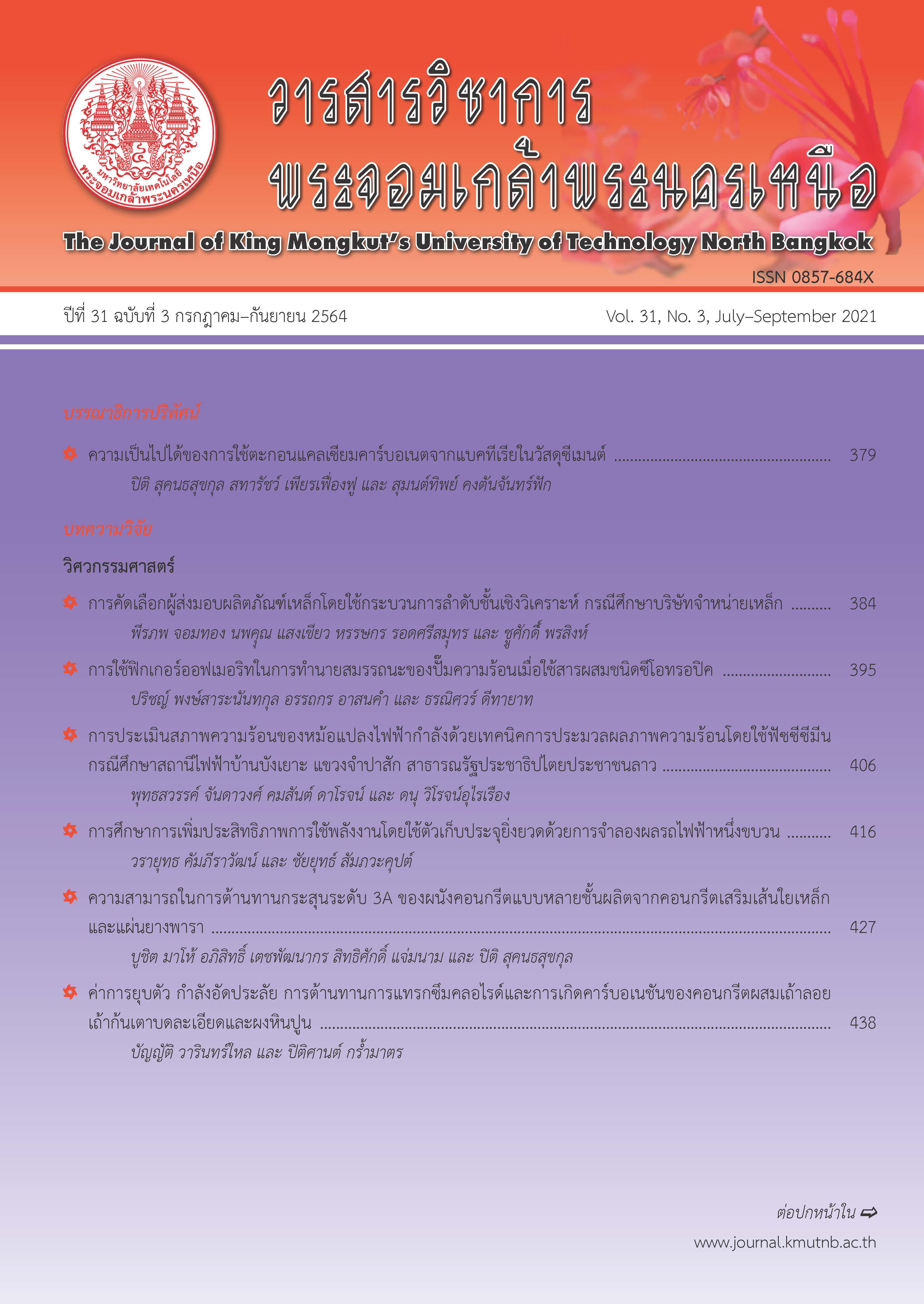The Selection of Steel Product Suppliers Using Analytic Hierarchy Process: A Case Study of Steel Company
Main Article Content
Abstract
The objective of this research is to study the decision criteria regarding the selection of steel product suppliers with Analytic Hierarchy Process (AHP). The criteria used in the study are 5 criteria including price, payment terms, delivery time, service and quality. Then a developed questionnaire was used for data collection. Prior to use, the questionnaire had been checked for quality by determining the objective consistency index. Six experts were involved in the decision-making process to purchase steel products. The results show that the most important aspect for selection was the product quality, accounting for 48.73%, followed by the delivery time, accounting for 18.86%. The least important criterion for judging was service, with the important weight of 7.72%. With regard to decision making in the selection of the most suitable supplier of steel products, Supplier A was found to obtain the most important criteria weight, accounting for 43.63%, followed by Supplier C and B, whose important weights represent 36.07%, and 20.30% respectively.
Article Details
The articles published are the opinion of the author only. The author is responsible for any legal consequences. That may arise from that article.
References
[2] M. Yogo, P. Lertkajornkitti, and J. Kunanoppadol, “Comparison of business model: A case study of steel store,” Silpakorn University Journal, vol. 36, no. 3, pp. 69–89, 2017 (in Thai).
[3] C. Chimabutr, “The factors affecting customer satisfaction in purchase of building meterials in retail stores and the adaptation of traditional building materials,” M.S. thesis, Faculty Economics, Thammasat University, 2015 (in Thai).
[4] N. Toomwangsa. (2018, September). Steel Industry. D.R. Industrial Co,Ltd. Bangkok, Thailand. [Online]. Available: https://www.krung sri.com/bank/getmedia/0ac57bbc-a283-411d-bf12-44996b0be1ca/IO_Steel_180903_TH_EX.aspx
[5] M. Giamalaki and T. Tsoutsos, “Sustainable siting of solar power installations in Mediterranean using a GIS/AHP approach,” Renewable Energy, vol. 141, pp. 64–75, 2019.
[6] A. E. Wolnowska and W. Konicki, “Multi-criterial analysis of oversize cargo transport through the city, using the AHP method,” Transportation Research Procedia, vol. 39, pp. 614–623, 2019.
[7] S. Kumar, F. Dweiri, S. Ahmed Khan, and V. Jain, “Designing an integrated AHP based decision support system for supplier selection in automotive industry,” Expert Systems With Applications, vol. 62, pp. 273–283, 2016.
[8] Y. Laoonual, “Assessment of electric vehicle technology development and its implication in Thailand,” presented at NAC 2014 the 10th NSTDA Annual Conference, Bangkok, Thailand, Apr. 1, 2014 (in Thai).
[9] I. Aschilean, G. Badea, I. Giurca, G. Sebastian Naghiu, and F. George Iloaie, “Choosing the optimal technology to rehabilitate the pipes in water distribution systems using the AHP method,” Energy Procedia, vol. 112, pp. 19–26, 2017.
[10] S. C. Nayak and C. Tripathy, “Deadline sensitive lease scheduling in cloud computing environment using AHP,” Journal of King Saud University – Computer and Information Sciences, vol. 30, pp. 152–163, 2018.
[11] L. P. Ghimire and Y. Kim, “An analysis on barriers to renewable energy development in the context of Nepal using AHP,” Renewable Energy, vol. 129, pp. 446–456, 2018.

